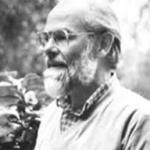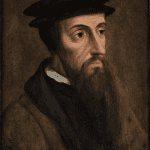This is Chapter Fifteen of my book, The Word Set in Stone: How Archaeology, Science, and History Back up the Bible (Catholic Answers Press, March 15, 2023: see further book and purchase information). In the book its title is “St. John Wraps it Up.” Bible passages: RSV.
*****
And after this he said to him, “Follow me.”
—JOHN 21:19
Ironically, though the Gospel of John has subject matter that can be subjected to archaeological examination, many seem to think the book is almost entirely non-historical and confines itself to theology and a sort of vague accompanying or underlying Greek-influenced philosophy. Some have even opined that topographical aspects of the Gospel are only symbolic. It’s a classic example of presuppositions leading folks astray.
It’s true that John’s Gospel has many elements that are more or less unique to itself, but it’s assuredly not lacking a solid grounding in historical reality. There are many compelling elements involved in probing the “archaeology of the Gospel of John.”
Bethsaida
This important city in biblical history, mentioned as Peter’s and Andrew’s hometown (John 1:44; see also 12:21) was located on the north shore of the Sea of Galilee. It has been well excavated since 1987, when Rami Arav, professor of religion and philosophy at the University of Nebraska at Omaha, rediscovered the site and identified it (et-Tell) as Bethsaida. [346]
Jacob’s Well
John 4:12 “Are you greater than our father Jacob, who gave us the well, and drank from it himself, and his sons, and his cattle?”
The location of Jacob’s Well is in Sychar (John 4:5–6), between Mt. Ebal and Mt. Gerizim, near Shechem and Nablus (or Neapolis). No excavations have taken place as of yet, but it’s well attested to in the second-century B.C. Jewish Book of Jubilees [347] and in the Mishna [348] (“the plain of Ein Soker”). Jacob’s Well is indeed located in the vicinity, about half a mile southeast of Nablus, at the foot of Mt. Gerizim. Jews, Samaritans, Muslims, and Christians all agree on its location and connection to Jacob, and there is scarce reason to doubt this strong tradition. Nor should John be doubted in writing that Jacob’s Well existed in Sychar.
John 4:6 (twice) and 4:14 use the Greek word pégé, which means “spring” or “fountain” (compare 2 Pet. 2:17; James 3:11). On the other hand, in 4:11–12, a different Greek word is used: phrear, which means “well” or “cistern” (see Luke 14:5). This perfectly describes Jacob’s Well, which is “a combination of dug-out well and running spring” [349] and is “cut through alluvial soil and soft rock [limestone], receiving water by infiltration through the sides.” [350]
Its water “is supplied in two ways—through underground sources that make it a true well and by percolated surface water, which makes it a cistern. This may have prompted Jesus’ remark about living water in v. 14.” [351] Thus, we observe an uncanny accuracy of description through the use of two Greek words that fit the actual site like a hand in a glove. “Bible and science”—contrary to unfortunately popular conceptions—is always a harmonious combination. This is a classic example.
The Pool of Bethesda
John 5:2 Now there is in Jerusalem by the Sheep Gate a pool, in Hebrew called Beth-zatha, which has five porticoes.
Until the nineteenth century, clear archaeological evidence for the existence of this pool was lacking. But in archaeological digs in that century, Conrad Schick discovered a large tank about 100 feet northwest of St. Anne’s Church, which he believed to be the Pool of Bethesda. Evidence for a pool under this name (“Beth Eshdathayin”) is found in the Copper Scroll from Qumran, [352] dated to between A.D. 25 and 68. Israeli historian Benjamin Mazar (1906–1995) believed that Jewish high priest Simon the Just built the pools in the third century B.C. [353] Urban C. von Wahlde elaborates:
In John 5:2 the Pool of Bethesda is described as having five porticoes or colonnades. For centuries, scholars thought that the notion of a five-sided pool was purely symbolic, intended to represent the five books of the Torah that were somehow superseded by the miracle of Jesus. Beginning in the 1880s, however, archaeologists discovered the remains of a pool north of the Pool of Israel, and continuing excavation ultimately exposed a rectangular pool with a wall in the middle that divided it in two. With porticoes on the four sides of the pool and on the central wall, this was indeed a “five-sided” pool. [354]
The Pool of Siloam
John 9:7 “Go, wash in the pool of Siloam.”. . . So he went and washed and came back seeing.
The Pool of Siloam was built during the reign of King Hezekiah, to leave besieging armies without access to the spring’s waters. The pool was fed by the newly constructed Siloam tunnel (“Hezekiah’s Tunnel”). During its early period, it was sometimes known as the Lower Pool (Neh. 3:15; Isa. 22:9). It was rediscovered during work on a sewer in the autumn of 2004. Archaeologists Eli Shukron and Ronny Reich uncovered some stone steps, and it quickly became evident that they were likely part of the Second Temple-period (516 B.C.–A.D. 70) pool. Shukron commented in an article announcing the exciting find,
The moment that we revealed and discovered this four months ago, we were 100 percent sure it was the Siloam Pool. . . . We know today that the Siloam Pool is connected to the Temple Mount. There is a road that connects the two elements. The entire system is clearer today. [355]
Once excavation commenced, four coins were soon found: all coins of Alexander Jannaeus (103–76 B.C.), a Hasmonean Jewish king. This is a strong indication that the newly rebuilt pool dates from the late Hasmonean or early Herodian period. A dozen coins later found date to the time of the First Jewish Revolt (A.D. 66–70). [356]
Portico of Solomon
John 10:23 refers to Jesus “walking in the Temple, in the portico of Solomon.” Flavius Josephus, the famous first-century Roman Jewish historian who lived in Jerusalem, referred to the wall and porch (or “cloister”) that King Solomon had built east of the Temple House:
Now this temple, as I have already said, was built upon a strong hill. At first the plain at the top was hardly sufficient for the holy house and the altar, for the ground about it was very uneven, and like a precipice; but when King Solomon, who was the person that built the temple, had built a wall to it on its east side, there was then added one cloister founded on a bank cast up for it. [357]
Josephus verifies that the porch, east of the outer court (Woman’s Court), along the east wall of Solomon’s and Herod’s Temple complex, was indeed built by King Solomon. [358]
Caiaphas
Caiaphas was indeed Annas’s son-in-law, as John 18:13 notes, and as we know from Josephus, [359] and he was the high priest (as John 18:13 also notes) from the years A.D. 18 to 36, having been appointed by Valerius Gratus (Prefect of Judaea from A.D. 15 to 26). Annas had been high priest from A.D. 6 to 15.
Mosaic Law, in referring to “the death of the high priest” (Num. 35:25, 28) implies that high priests were still called by that title even after leaving office (much as we address former presidents of the United States as “Mr. President.” This easily explains Luke 3:2 (“in the high priesthood of Annas and Caiaphas”). Matthew calls Caiaphas “high priest” twice (26:3, 57).
FOOTNOTES
346 Rami Arav, “Bethsaida Biblical Archaeology,” University of Nebraska Omaha (2013).
347 R.H. Charles, The Jewish Book of Jubilees (London: A. and C. Black, 1902), 200.
348 Mishna; Menahot (“the plain of Ein Soker”).
349 Urban C. von Wahlde, “Archaeology and John’s Gospel,” in James H. Charlesworth (ed.), Jesus and Archaeology (Grand Rapids, MI: Wm. B. Eerdmans Publishing, 2006), 523-586.
350 “Jacob’s Well (2),” in McClintock and Strong Biblical Cyclopedia (New York: 1880).
351 “Jacob’s Well,” in Merrill C. Tenney (ed.), Zondervan Pictorial Encyclopedia of the Bible.
352 J.M. Allegro, The Treasure of the Copper Scroll (Garden City, NY: Doubleday, 2nd ed., 1964), 84.
353 Benjamin Mazar, The Mountain of the Lord (Garden City, NY: Doubleday, 1975), 202.
354 Urban C. von Wahlde, “The Puzzling Pool of Bethesda,” Biblical Archaeology Review 37.5 (2011), 40-47, 65.
355 “Archaeologists identify traces of ‘miracle’ pool” (NBC News / Associated Press (December 23, 2004).
356 Hershel Shanks, “The Siloam Pool Where Jesus Cured the Blind Man,” Biblical Archaeology Review 31 (5) (Sep.-Oct. 2005), 16-23.
357 Josephus, The Wars of the Jews, Book V, ch. 5, sec. 1.
358 Josephus, Antiquities of the Jews, Book XX, ch. 9, sec. 7.
359 Id., Book XVIII, ch. 2, sec. 2.
***
Practical Matters: Perhaps some of my 4,000+ free online articles (the most comprehensive “one-stop” Catholic apologetics site) or fifty-one books have helped you (by God’s grace) to decide to become Catholic or to return to the Church, or better understand some doctrines and why we believe them.
Or you may believe my work is worthy to support for the purpose of apologetics and evangelism in general. If so, please seriously consider a much-needed financial contribution. I’m always in need of more funds: especially monthly support. “The laborer is worthy of his wages” (1 Tim 5:18, NKJV). 1 December 2021 was my 20th anniversary as a full-time Catholic apologist, and February 2022 marked the 25th anniversary of my blog.
PayPal donations are the easiest: just send to my email address: apologistdave@gmail.com. You’ll see the term “Catholic Used Book Service”, which is my old side-business. To learn about the different methods of contributing, including 100% tax deduction, etc., see my page: About Catholic Apologist Dave Armstrong / Donation Information. Thanks a million from the bottom of my heart!
***
Summary: Chapter Fifteen of my book, The Word Set in Stone (March 15, 2023) surveys the archaeological and historical evidences that prove the Gospel of John’s accuracy.


















